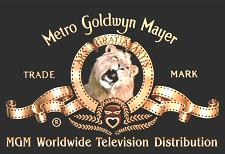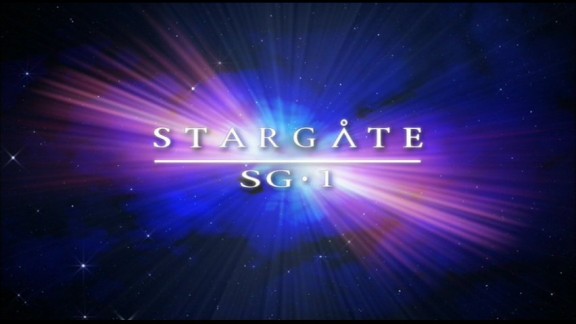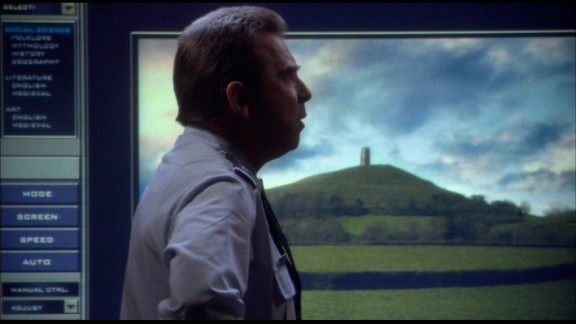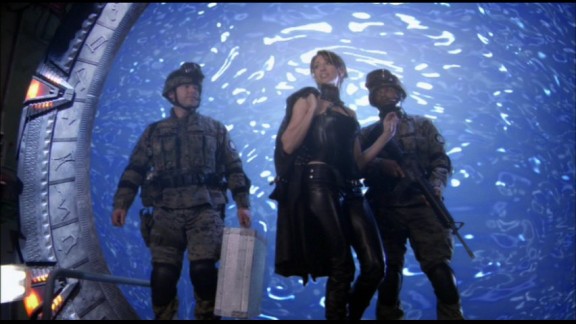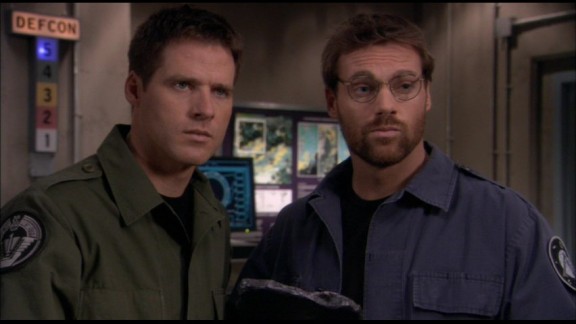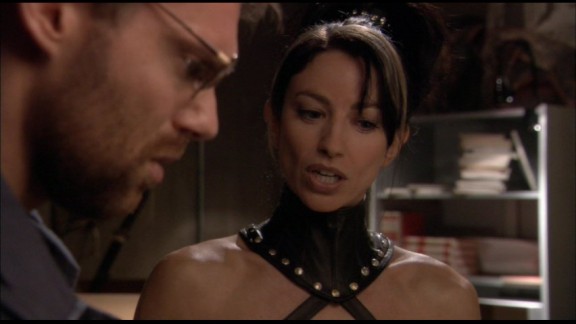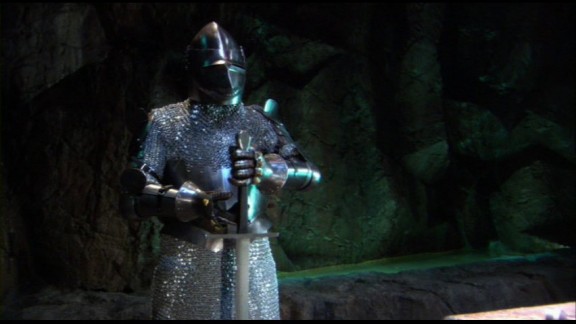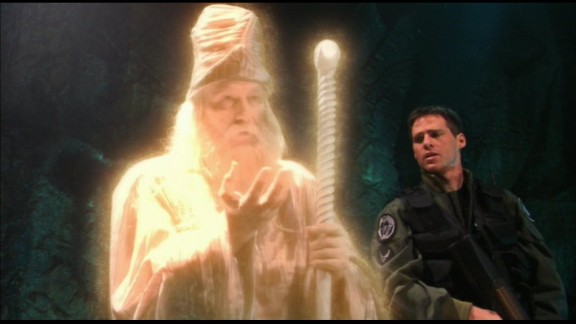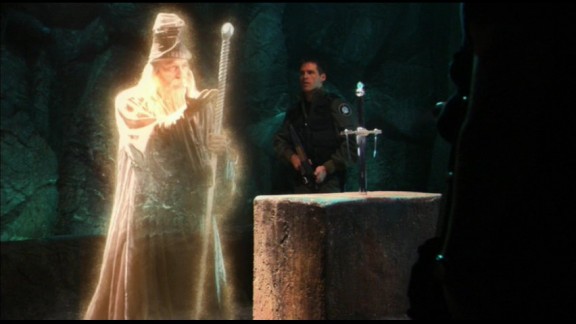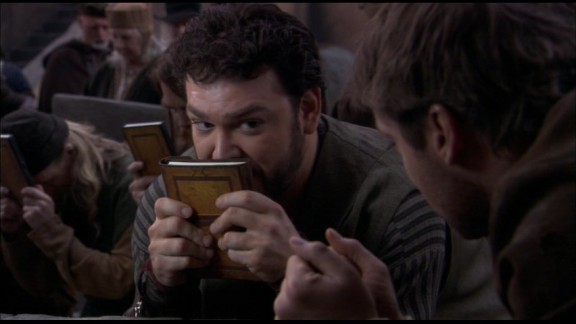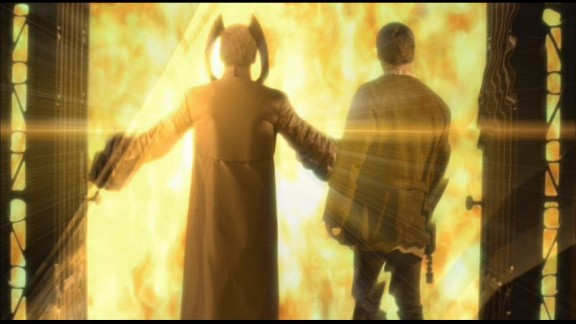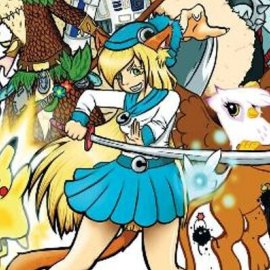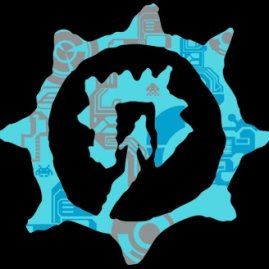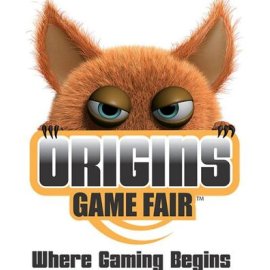Here is a little treat for you about how we found ourselves “Stepping Through to Camelot: when Stargate SG-1 goes Arthurian”. A fantastic tale that all ages enjoyed!
By the end of Stargate SG-1’s eighth season, the powers that be had wrapped up eight years worth of story lines and character journeys. All (well almost all) of the enemies were defeated, the team had made it home safely and all was well in the world of SG-1.
When the show was confirmed for a ninth season, it gave the writers and producers a clean slate to work with. They were given an opportunity to start anew. And start fresh they did… by incorporating a timeless mythology – one that has been around, reinvented, and reused throughout the centuries.

Having tackled the mythologies of Ancient Egypt, Greece, Hindu, and even Norse legendary, Bridge Studios, the power that be of Stargate SG-1 took a stab at the world of Arthurian legends. How well were these legends incorporated into the already rich labyrinth of countless mythologies? What parallels were drawn between the characters of Arthurian lore and a team of travelers who traipsed across the galaxy on a daily basis, who were already dear and established ‘friends’ of fans worldwide? In what way did the creators of SG-1 make the century’s old stories their own new brand of myth? What was the fan response to such a new installment in the well-established world of Stargate? These are the questions this paper will attempt to answer, in a hope to better understand the ultimate impact King Arthur and his hoard of many heroes had on the universe known as Stargate SG-1.
To understand how Stargate SG-1 came to incorporate the timeless legends from King Arthur’s Court, one must understand where it started. SG-1 (1997-2007) is a television series of the science fiction persuasion based on the idea first established in the movie Stargate (1994). It ran for ten years on Showtime and the Sci-Fi Channel (respectively), with the primary focus of the show being on the characters that made up the team of SG-1 – Jack O’Neill, Daniel Jackson, Samantha Carter, Teal’c, and in later seasons Cameron Mitchell and Vala Mal Duran.
The underlying theme for the show was derived not strictly from its “predecessors” like Star Trek or Battlestar Galactica (the 1960’s version), but also from mythologies and histories known throughout the world. Ancient Egyptian myth was the first and prominent one they tackled and molded into their own unique story. The show has hit on Ancient Greek, Chinese, and even Hindu mythologies. After eight fantastic seasons of “conquering” the most ancient of histories, the powers that be decided to turn towards something a little more “modern” in comparison. They brought the Arthurian Legends into the mix, and took a stab at trying to make it their own.
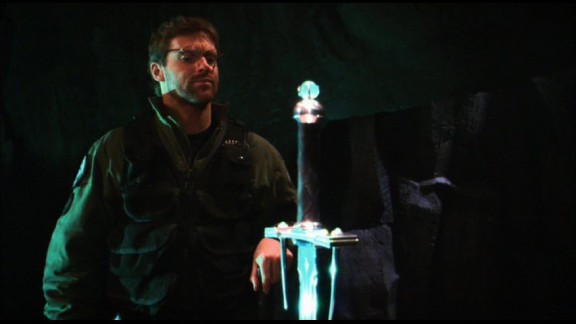
The most obvious inclusion of the Arthurian mythology into Stargate was the way the writers and producers brought in well known figureheads of the legends. The whole journey in the world of King Arthur begins when Daniel Jackson realizes while looking through a database that one of the Ancients (a race established in previous seasons of the show, later emphasized as the Alterans) is really Merlin (“Avalon Part 1”).
It had already been established that a few choice Ancients were revered and respected by not only the characters, but the fans as well. In making Merlin an Ancient, who ultimately went against his own kind to help our primary heroes (“The Shroud”), the writers seem to be reinstating him to his glory of former years while also planting the Arthurian legend into the world of Stargate.
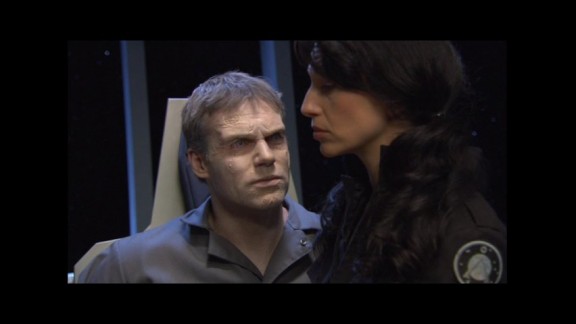
This was a big deal, as is noted by one of the long-time directors for the series, Martin Wood: “We brought Merlin into it in a big way with Arthurian legends, and that was a huge thing” (Gosling 14). They are showing their reverence towards him by making him the ‘odd man out’ from the rest of the group of Ancients. Yet they hold to what is mainstream knowledge when it comes to representing Merlin visually. In ‘Avalon, P.1’, the first time we ‘see’ Merlin, he appears in the way many people have come to expect him to appear. “He wore a tall pointed blue hat, long grey cloak, and a silver scarf. He had a long white beard and bushy eyebrows that stuck out beyond the brim of his hat” (Tolkien 24).
That description is actually of Gandalf the Grey (who, one could argue, is just as much a Merlin figure in his own right) from the first part of Lord of the Rings (The Fellowship of the Ring), but it holds true to the image of Merlin done by the creators of SG-1. Using this universal ‘image’ given to some of the most renowned wizards in literary or cinematic history – the Merlin in Disney’s adaptation of The Sword in the Stone is another good example of how SG-1’s Merlin appears – the creators of Stargate are sticking to a comfortable medium for the audience. It puts the viewers, like me, more at ease because we do not have to conjure up some grand science fiction-like image to go along with our grand science fiction show. Merlin looks like we expect him to look, so there is no worry in seeing something different and we can focus on this new story given to him.
The true impact of Arthurian legend blending in with Stargate can even be seen in the reactions of the characters as well. Daniel’s excitement at figuring out Merlin was an Ancient, and Cameron Mitchell’s own interest in finding out the same information is almost palpable through the screen. In the true Stargate fashion, they do not try and make the legends their own as much as they try and build on what is already there and respected. In many of the “previously on Stargate SG-1” segments that play at the beginning of several of the ninth and tenth season’s episodes, they even reuse the scene in which Daniel announces and is excited about the involvement of Merlin, as well as Mitchell’s own disbelief at Merlin being an ancient. It helps reiterate the importance of Merlin in the series now, and reinforces how the characters we think are the most important feel about the inclusion of such a respected character from legend.
Interpretation is also important in how it is incorporated. Morgan le Fay, a character in Arthurian legend who is often portrayed as evil and is the arch nemesis of Merlin, is brought out in a good light. Though she is first thought by the characters to be set on an “evil” purpose (“Morpheus”), an episode later the characters, coincidentally Daniel, and audience find out that she really is trying to help Merlin rather than hinder his attempts (“The Pegasus Project”). There is a clear need in the Stargate world for more of the Ancients to go against their own philosophy and be helpful.
By making Morgan le Fay a good character that, like Merlin, helps the SG-1 team, the creators of the show not only bring another Ancient out of the selfish darkness, but shine light upon her name which has become expected to be wreathed in evil and a darkness of its own. With the usually cluttered mythos of SG-1, the fresh start created by the ending of season eight provided a wide girth for the inclusion of the Arthurian mythology into the world. The involvement of iconic characters in the legend as members of a SG-1 exclusive race not only tied it back to the already established world of Stargate, but gave new life and a different ‘look’ to the Merlin and Morgan that had been around for ages.
Along with making famous Arthurian figureheads as stand-alone characters within the series, the creators paralleled our heroes from SG-1 with notable characters who were known to have been a part of Arthur’s court at one time or another (or, in some cases, one version or another). Upon waking up in a cave after several thousand years, Merlin believes that SG-1 is the Knights he was separated from ages before. He refers to Daniel as ‘Galahad’, Mitchell as ‘Perceval’, and Samantha Carter as ‘Guinevere’ (“The Quest, Part 2”).
In making Sam ‘Guinevere’, they give strength to a character that is often seen as weak because Sam Carter is anything but weak. They are making ‘Guinevere’ a name to be proud of. It is inspiring to women, especially young girls, to look into the world of Arthurian myth and see who this ‘Guinevere’ is because if Merlin referred to Sam as such, than she must be a pretty cool woman. Now Galahad and Perceval, respectively, were Knights who were known to have actively sought the Holy Grail.
When Merlin mistakes them for such Knights, Daniel and Mitchell are actively seeking the SG-1 equivalent of the Holy Grail. Not only are the writers paralleling the characters of the show to characters of the legend, they are also paralleling the journey those legendary characters made. It provokes an interest in the already curious and knowledge seeking fan base. As a fandom, the loyal Stargate SG-1 viewers like to know just when and where the writers got their inspiration from. By incorporating popular characters like Merlin, the audience has an idea of where to find information on the other characters from stories along the same line.
Even if they do not really know much about Galahad or Perceval, the fans know what to start with. From a fanfiction writer’s point of view, researching story lines (and at the same time, the mythologies they are based on) helps better their own ideas of what to write about and interpret parallels in creatively different ways than the writers of the show did. Upon surveying a portion of the fan base, I found that several of my fellow fans were even drawing conclusions and parallels that I myself would not have been able to do before taking a class on Arthurian legend. Even after taking such a class, there are parallels being drawn that I never would have considered.
Nytegoddess on Livejournal found a parallel between Teal’c and Bors, and provided several pieces of proof as to why they could be ‘connected’. She mentions how Bors was the only one of the Grail Knights to return from the quest, Galahad and Perceval having died after achieving it; and finds a similar circumstance between Teal’c ‘returning’ from the future where Daniel and Cameron have perished (‘Unending”).
She makes several other connections between characters and moments in the series that I never would have thought to look for myself. Daniel walking through the wall of fire in “The Quest Part 1” to obtain the grail is similar to Galahad “quenching the fire that surrounds the tomb of Simeon” (Schadegg). Nytegoddess wrote a fanfiction where Daniel remembers the quests of Galahad as if they were his own (“All That I’m Allowed”). These are the sorts of things that happen when something is incorporated in the Stargate world – it is immortalized in a way never originally thought possible. Arthurian legend “fitted perfect in the SG1 universe”, as is evident by the research and commitment put into the legends beyond the series by the fans (Schadegg).
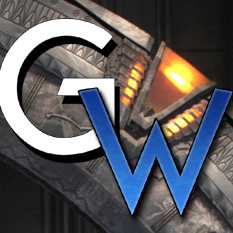 A well-known Stargate website, Gateworld Dot Net, put the characters of Galahad, Perceval, Guinevere, and Mordred (who Merlin referred to the SG-1 character Ba’al as) in their character database. Now these were not stand alone characters like Merlin or Morgan le Fay in the series, but the maintainers of the site knew the curiosity of their fandom and incorporated them into the Gateworld database. It gave such characters a place in the world of SG-1 fans, which is a big deal considering SG-1 fans have pretty good memories and like to use the material brought to them by the creators of the show.
A well-known Stargate website, Gateworld Dot Net, put the characters of Galahad, Perceval, Guinevere, and Mordred (who Merlin referred to the SG-1 character Ba’al as) in their character database. Now these were not stand alone characters like Merlin or Morgan le Fay in the series, but the maintainers of the site knew the curiosity of their fandom and incorporated them into the Gateworld database. It gave such characters a place in the world of SG-1 fans, which is a big deal considering SG-1 fans have pretty good memories and like to use the material brought to them by the creators of the show.
And by making our beloved SG-1 like those characters, a whole new level of respect is created for characters like Galahad, Perceval, and Guinevere and the material they were built on. Even for the fans that do not care to delve deeper into the Arthurian legend behind the Stargate veil, a simple understanding of how such characters are generally perceived is obtained. By building on the knowledge of how the show’s characters operate, the audience immediately understands the ‘operations’ of their legendary counterparts. Daniel and Mitchell are good guys, so one can interpret Galahad and Perceval are good guys as well. Reversely, Ba’al is a bad guy (a very bad guy loved by fans all around), and in having Merlin refer to him as ‘Mordred’ it can be guessed that Mordred was not such a nice fellow.
One interpretation done by the powers that be of Stargate SG-1 that could reflect the social connotations in the world is their interpretation of the Holy Grail. In the time of Arthur and his Knights, as well as in the time of the authors who wrote the stories, religion had a big influence. In many of the Grail stories, said Grail was seen as a cup or chalice that was a symbol for the religion – Christianity. There are versions out there, such as Wolfram’s Parzival or Dan Brown’s The Da Vinci Code, which portray the Grail as something other than a cup. In Parzival it is a rock. In The Da Vinci Code it is Mary Magdalene. Stargate SG-1 takes the same route of these works by not making the Sangraal a cup, but a weapon instead. Except, once again in the fashion of twisting the legends into something they could call their own, this weapon was not a symbol of the ‘all-mighty’ religion of the show, Origin.
Origin, in a lot of ways, can be compared to many monotheistic religions such as Christianity or Islam. It is the religion dedicated to the Ori, who are the (also ascended) enemy of the Alterans. The best description of what makes them different from the Alterans is given by Orlin (who is an Alteran himself): “A long time ago, the Ori and the Alterans were one society, human, on an evolutionary path to ascension, but a philosophical division grew. The Ori grew more and more fervent in their religious belief. The Alterans…for lack of a better way of putting it…believed in science. The Ori tried to wipe them out” (“The Fourth Horseman, Part 1”). It is true the Ori are a group of higher beings rather than just God, but the practices and beliefs that are a part of the religion of Origin are quite similar to those found in many of today’s religions. In truth, the Holy Grail weapon of the show is a symbol for the direct opposite of what Origin is.
Origin is submission, ultimately giving up one’s free will in devotion to the Ori. The Sangraal was a weapon for independence and free thinking, which is why SG-1 is searching for it. They do not believe in the practices set down by the Ori, and are constantly fighting them in order for their free will to remain just that – free. They are not fighting for the big religion, but against it. It can clearly be seen how making the ‘great religion’ of the show might offend a portion of viewers. “Why not tackle some not-so-obscure Christian myths?
Well there goes the mid-West demographic…” Michael Shanks (the actor who played Daniel Jackson on the series) jokingly wrote in the foreword to the season nine Illustrated Companion (Gosling 7). Going in, they knew some of the fan base could possibly find it offensive. But they also knew how attuned the fan base was to the show and the level of intelligence that came along with such a fan base. In the very next paragraph of the foreword, Michael wrote “trust me, we believe the long-standing fans of Stargate SG-1 have suspended their disbelief enough that no one is going to start protesting outside the studio” and “you know that we often carry on with tongue planted firmly in cheek, so you’ll know that offending anyone is not our intention” (Gosling 7).
There is an innate trust of the fans the people involved with the show have, and they know to give them something that is intelligent and eye-opening. So making the Grail a weapon that destroyed the Ori (or at the least, brought them down from their ‘godly’ status) was simply the SG-1 way of making something so known their own. In fan reaction to such ‘changes’, there was an overall enjoyment of the Grail being used as a weapon, though opinions vary about how it was visually portrayed. Some were happy that it was a red jewel, while others wished they could have been a little more creative in their retelling of it (Schadegg).
In Approaching the Possible: The World of Stargate SG-1, the author explores several different aspects of the Stargate culture, including the fans that make up the show (what she refers to as “fanchise”). In the chapter focused on this “fanchise”, there is a wonderful part that sums up what SG-1 fans are: “fans are what make SG-1 as good as it is – because they demand the best” (Storm 97).
The creators of the series, when coming to tackle the massive “emptiness” left after season eight, knew of this demand for greatness. For years, they had provided such greatness in the way of mythologies that predated the Arthurian myths, such as the Egyptian myths – “many of its gods and goddesses harbor both good aspects and evil or unflattering aspects” (Storm 3). It was this same understanding that led the Stargate creators to go exploring in the worlds of Arthur for their “fresh and new” sources. But what was the fan reaction to throwing Arthur and his band of gallant knights, wizards, and sorcerers into the mix? I surveyed for opinions on a known site where Stargate SG-1 fans frequent – Livejournal.
Upon reading and reviewing the answers, I find that the majority of people replying to my questions have an overall enjoyment of the inclusion of Arthurian myth into one of their most favored series. Several of them find it a “refreshing retelling” of the stories that were considered stale and overdone time and again (Schadegg). Nytegoddess on Livejournal, who provided a two comment response to my questions (in terms of Livejournal use, that’s a long response), said “the way these shows,” (she wasn’t just referring to Stargate, mentioning Xena and Hercules as well), “brought history to life made me see the real depth to those previously bland stories.”
She also added how the “Stargate spin” on the myths “can only add to the enjoyment of the Arthur legend” (Schadegg). Just the knowledge that I got any response to the questions at all shows there was at least some impact the inclusion had on the fandom. The fans remembered the myths because it was incorporated into the show, and thus were able to make opinions and notes on it however they saw fit.
As a devoted fan of the series myself, I absolutely loved the involvement of the Arthurian stuff into the series. It was something they had never done and, like they had done with the other mythologies, made me strive to learn more and watch more. I never would have gotten as into the Arthurian legends had it not been for Stargate’s involvement in that genre. It has inspired me to understand it all better, and to be more creative in how I pursue things like fanfiction and fan videos.
“When a story is translated from one medium to another – novel to stage, film, television and so on – the first question people ask is how the copy differs from the original” (McGregor 131). It can be seen through interpretation and explanation how Stargate SG-1’s take on Arthurian legend differs from its predecessors, but the similarities can be seen as well. Though the creators of the show strived to take something well-known in Western mythology and make it their own, they also held to some of the things that make Arthurian legend a genre all to itself. The fans of the series believe Stargate has left a mark in the world of Arthurian myth, and the myth has left a mark on them. I believe scifi_tv_addict on Livejournal said it best – Stargate SG-1 made it “like the Gods of Greece and Egypt, and the North actually existed – but not in the way that we might think they did.
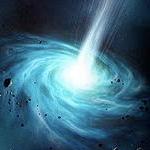 That is what they did with this story as well – taking one of the most famous and popular western myths and creating a new version of it” (Schadegg).
That is what they did with this story as well – taking one of the most famous and popular western myths and creating a new version of it” (Schadegg).
I am in complete agreement – the Arthurian legends of Stargate SG-1 are new and origin al, while still being true to the sources from whence they came.
al, while still being true to the sources from whence they came.
I hope you have enjoyed. Thank you for reading. Please feel free to leave a comment here or by visiting me on Twitter by clicking my avatar. Thank you.
Works Cited:
“All That I’m Allowed.” Fanfiction.net. 18 March 2009. 5 April 2009 <http://www.fanfiction.net/s/4932840/1/>.
“Avalon, Part 1.” Stargate SG-1. MGM/Sci-Fi Channel, Vancouver, 15 July 2006.
Brown, Dan. The Da Vinci Code. New York: Random House, 2003.
Eschenbach, Wolfram Von. Parzival. London: Penguin Books, 1980.
“The Fourth Horseman, Part 1.” Stargate SG-1. MGM/Sci-Fi Channel, Vancouver, 16 September 2005.
Gateworld. 3 March 2009. Gateworld LLC. 3 March 2009. <http://www.gateworld.net>.
Gosling, Sharon. Stargate SG-1 Illustrated Companion, Season 9. London: Titan Books, 2006.
McGregor, Gaile. “Stargate as Cancult? Ideological Coding as a Function of Location.” Reading Stargate SG-1. Ed. Stan Beeler and Lisa Dickson. New York: I.B. Tauris & Co. Ltd, 2006.
“Morpheus.” Stargate SG-1. MGM/Sci-Fi Channel, Vancouver, 21 July 2006.
“The Pegasus Project.” Stargate SG-1. MGM/Sci-Fi Channel, Vancouver, 28 July 2006.
“The Quest, Part 1.” Stargate SG-1. MGM/Sci-Fi Channel, Vancouver, 22 September 2006.
“The Quest, Part 2.” Stargate SG-1. MGM/Sci-Fi Channel, Vancouver, 13 April 2007.
Schadegg, Mandy (dannysgirlsg1). “Need Some Opinions Straight From Fandom…” Weblog entry. A Canvas of Insanity. 17 March 2009. 24 March 2009. <http://dannysgirlsg1.livejournal.com/2009/03/17/>
“The Shroud.” Stargate SG-1. MGM/Sci-Fi Channel, Vancouver, 4 May 2007.
Storm, Jo. Approaching the Possible: The World of Stargate SG-1. Toronto: ECW Press, 2005.
The Sword in the Stone. Dir. Wolfgang Reitherman. Perf. Rickie Sorenson, Karl Swenson, Junius Matthews, Sebastian Cabot, Norman Alden. 1963. DVD. Walt Disney Productions/The Walt Disney Company, 2009.
Tolkien, J.R.R. The Lord of the Rings: The Fellowship of the Ring. New York, Houghton Mifflin Company, 1954.
“Unending.” Stargate SG-1. MGM/Sci-Fi Channel, Vancouver, 22 June 2007.
